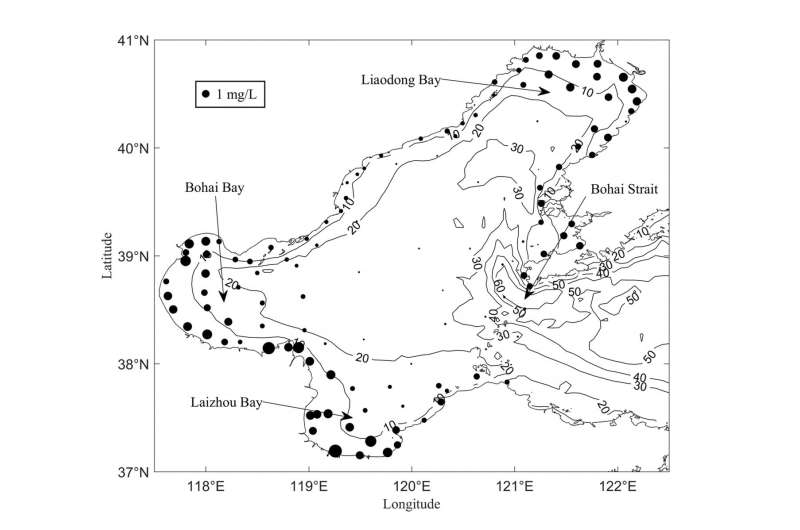Numeric modelling of nonpoint pollutions in the Chinese Bohai Sea

Surface water contamination due to nonpoint source (NPS) pollutants has severely degraded water quality and threatened ecosystems. However, previous research has primarily examined the NPS pollutants in watershed and coastal rivers or soils rather than seawater or bays without assimilation methods, resulting in the model's uncertainty.
In recent years, the Bohai Sea has been one of the most exploited areas in the world, exacerbating environmental pollution. Pollution modeling has provided an effective means for environmental evaluation and management. However, due to the uncertainty of control variables, there is still uncertainty in the models. 4-D-Var data assimilation is one of the most effective and powerful approaches. Based on the theory of inversion, 4-D-Var involves the adjoint method, and has the advantage of assimilating spatio-temporally distributed observations into numerical models while maintaining dynamical and physical consistency within the model
As a step toward a practical and systematic numerical model, this study introduces the adjoint method, and for the first time takes the Bohai Sea as a case study for combining the NPS term and initial condition inversion. The topography of the Bohai Sea and routine monitoring stations are shown in Figure 1.
In an article coauthored by Yongzhi Liu, Youli Shen, Xianqing Lv and Qiang Liu, scholars at the Ocean University of China and Beihai Marine Environmental Monitoring Centre Station of State Oceanic Administration which is published in Science China Earth Sciences, report that the adjoint method offers a powerful tool for NPS TN assessment.
The team conducted experiments to improve the model. In gradient-related experiments, they found that the steep decent method is better than L-BFGS method in their adjoint model. In ideal experiments, they report that their model is capable of inverting the control variables. In practical experiments, it presents an accurate simulation of TN.
They summarized their numerical experiments: "The assimilation of NPS term (ST) is more important than that of initial value (IV). Simulated results are further improved with the adjoint method. Furthermore, NPS TN is essential for TN simulation. The Bohai Sea is severely polluted in three bays."
Finally, they report, "The adjoint model is not specific to the Bohai Sea and can be generalized to other regions, such as the Beibu Gulf." This research provides preliminary results for NPS pollutant estimation.
More information: YongZhi Liu et al, Numeric modelling and risk assessment of pollutions in the Chinese Bohai Sea, Science China Earth Sciences (2017). DOI: 10.1007/s11430-016-9062-y
Journal information: Science China Earth Sciences
Provided by Science China Press


















